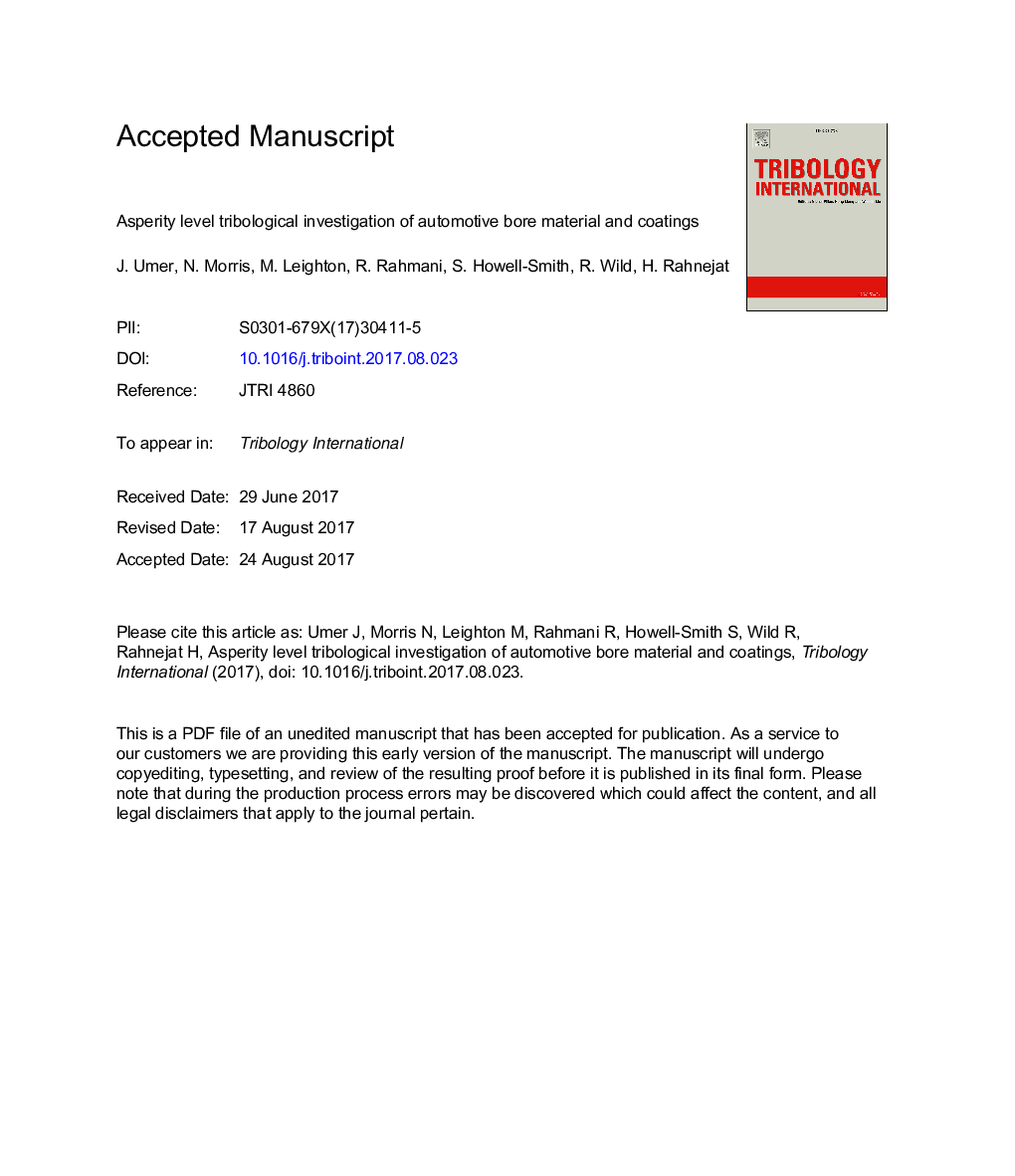| Article ID | Journal | Published Year | Pages | File Type |
|---|---|---|---|---|
| 4985752 | Tribology International | 2018 | 26 Pages |
Abstract
Choosing in-cylinder surfaces is complex. A well-chosen surface has low friction and wear. Conversely, poor oversight often leads to premature failure through wear and scuffing. Typically cylinder bore surfaces are selected experientially. This paper demonstrates the use of Atomic Force Microscopy in LFM mode, characterising typical cylinder bore materials and coatings. The approach uses integrated LFM with continuum contact mechanics. It evaluates the real contact area and effective elastic modulus of the surface, including the effect of any reactive surface film. Surface energy and shear strength, as well as the coefficient of friction in nanoscale interactions are also determined. These properties are measured for 6 cylinder bore materials, including for composite Nickel-Silicon Carbide and DLC, used for high performance engines.
Keywords
Related Topics
Physical Sciences and Engineering
Chemical Engineering
Colloid and Surface Chemistry
Authors
J. Umer, N. Morris, M. Leighton, R. Rahmani, S. Howell-Smith, R. Wild, H. Rahnejat,
